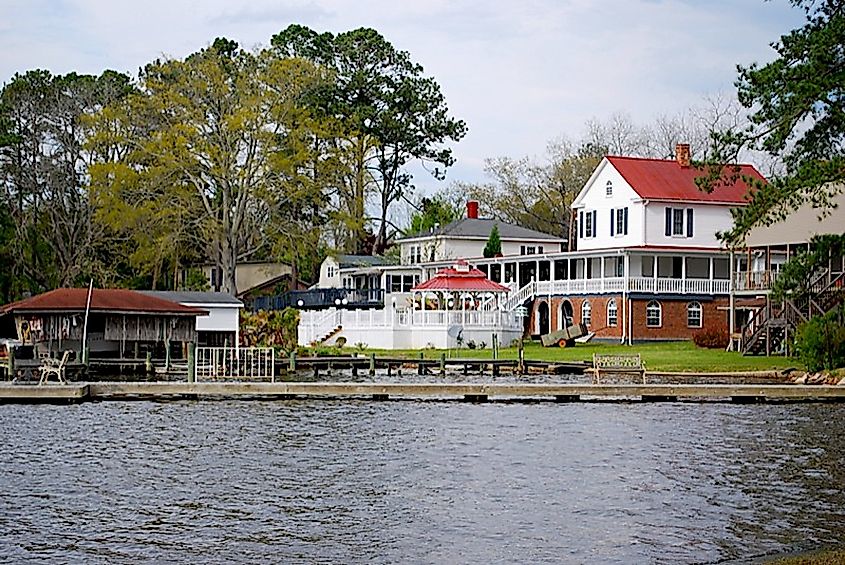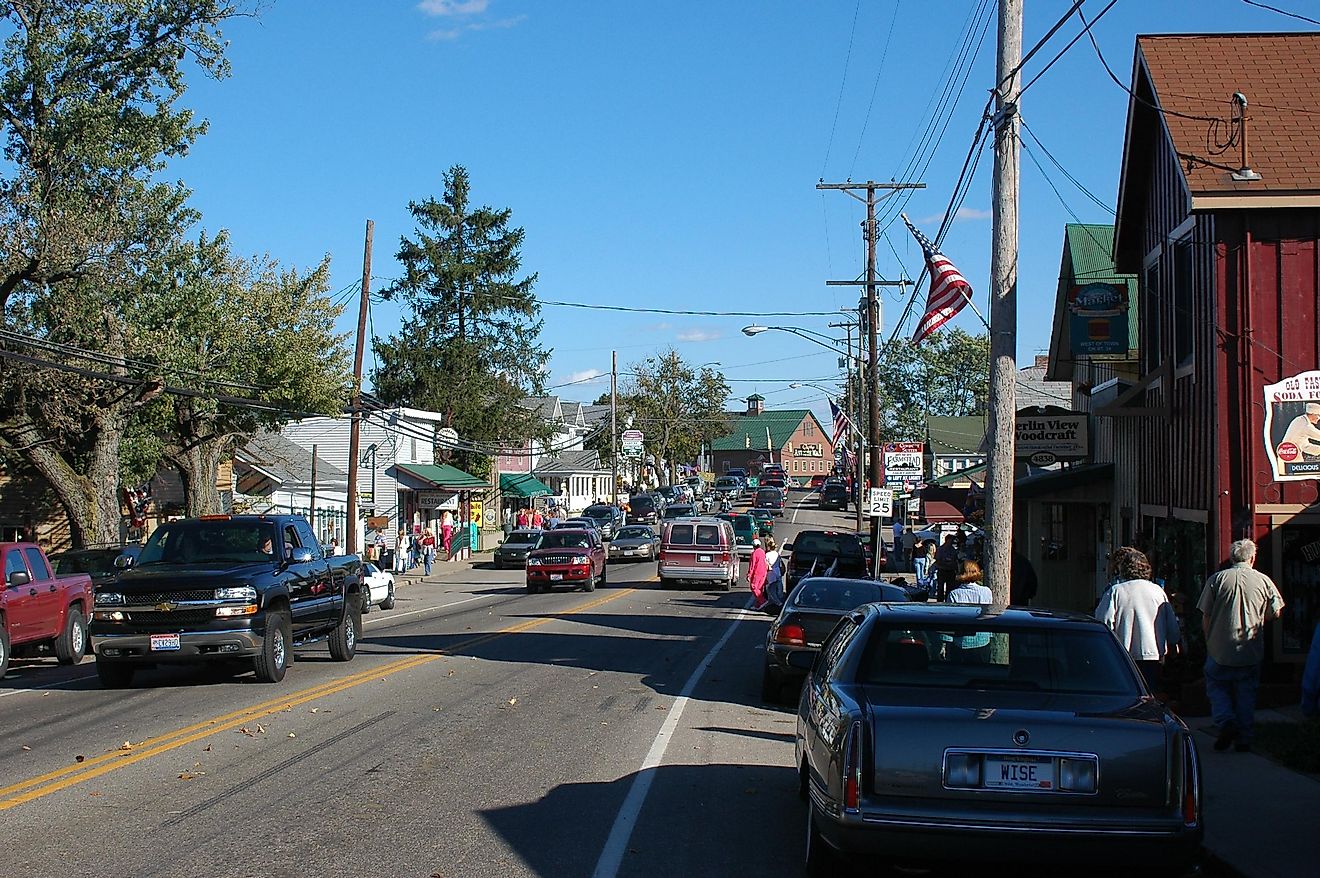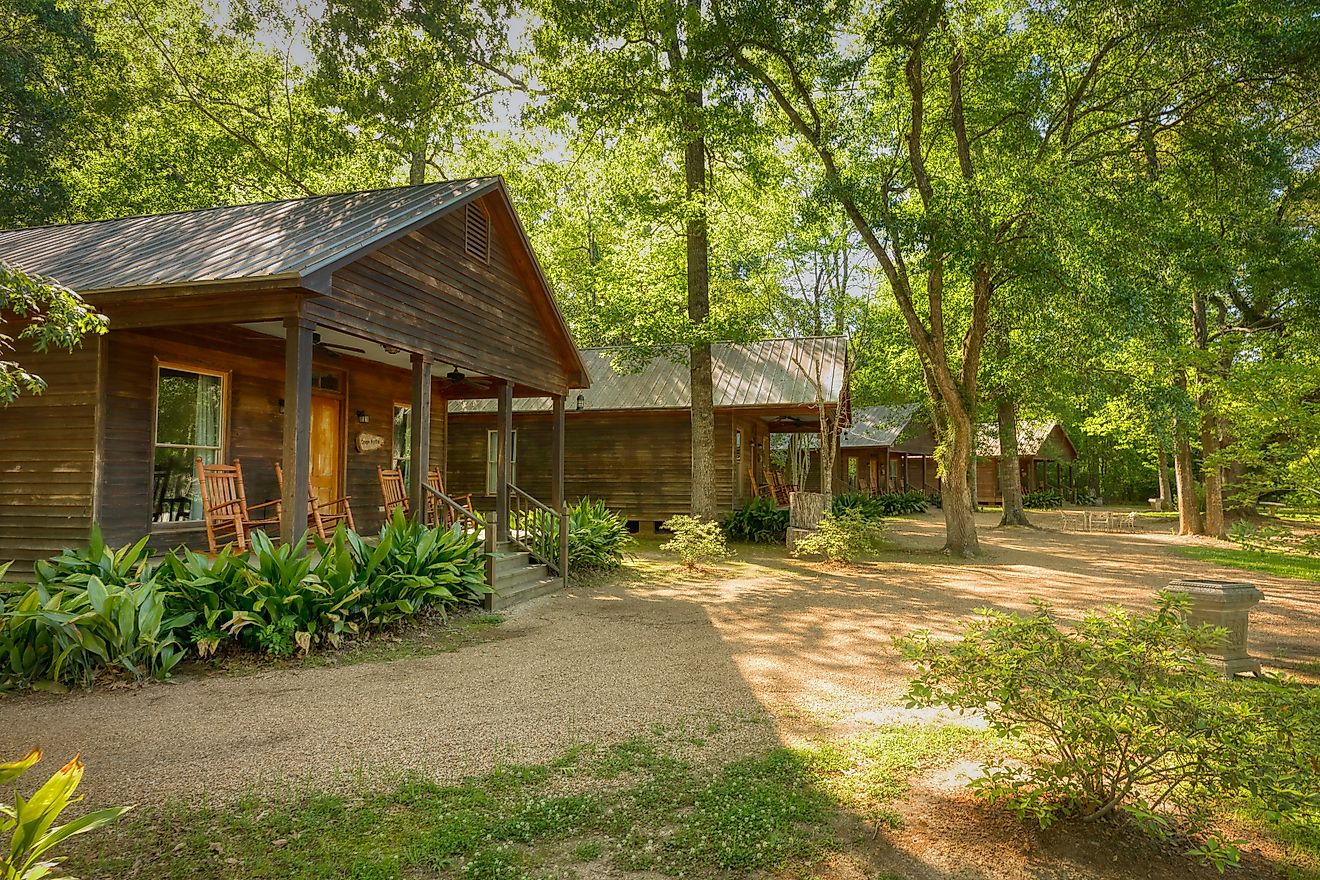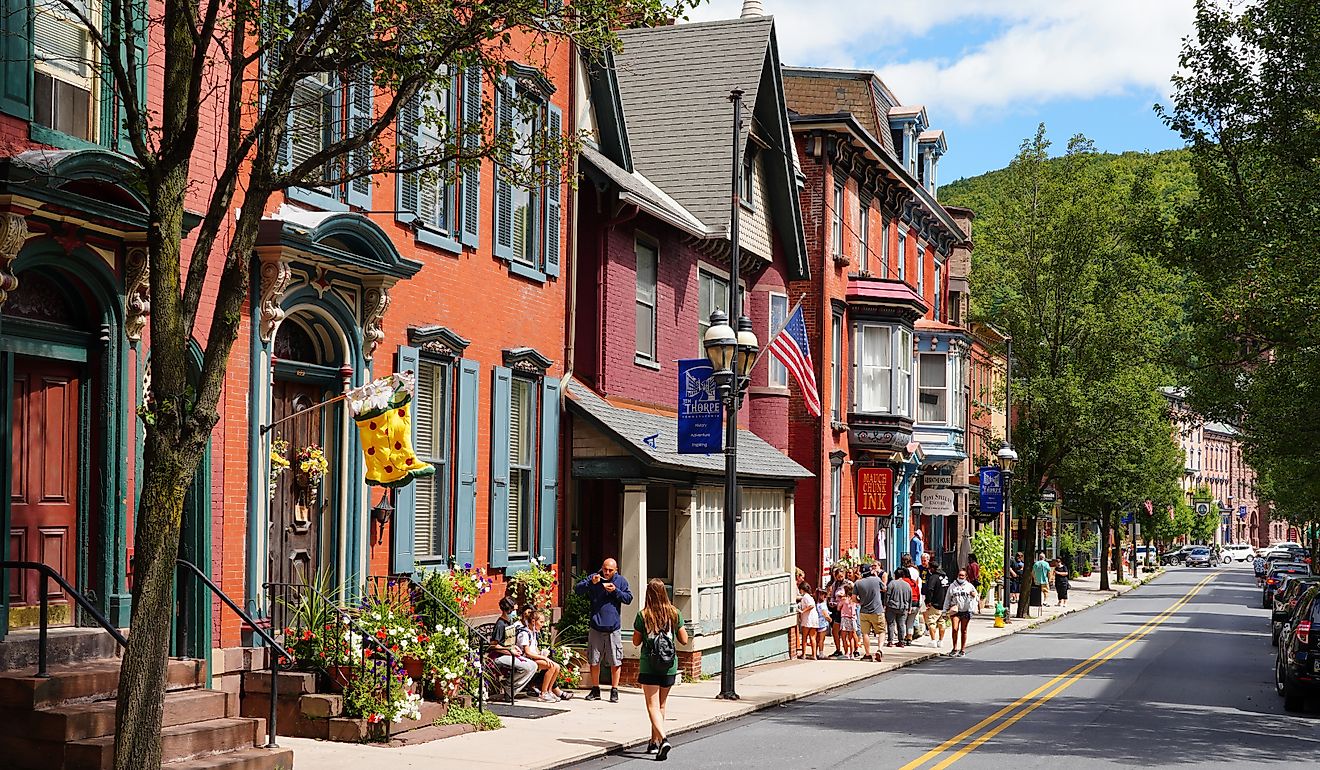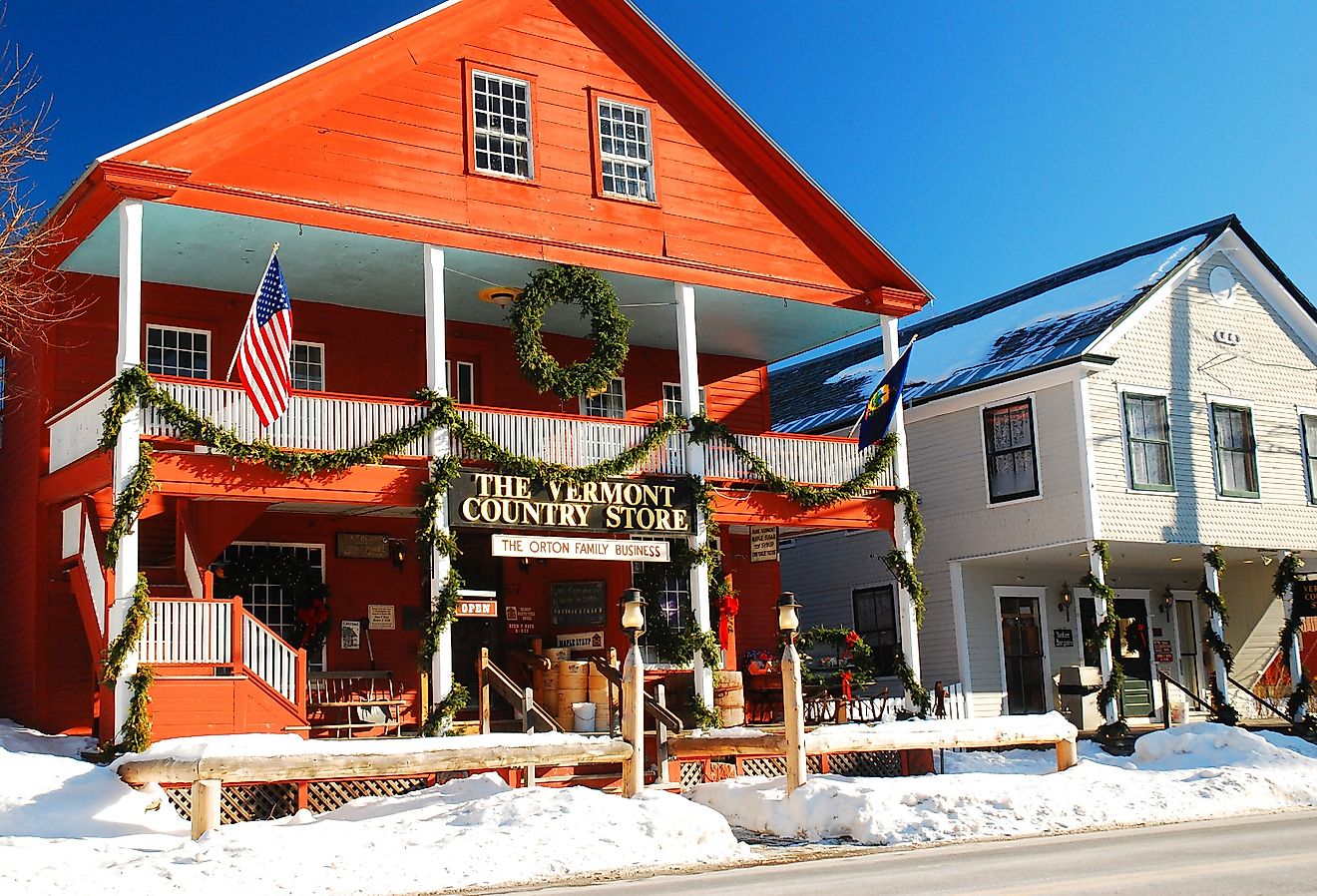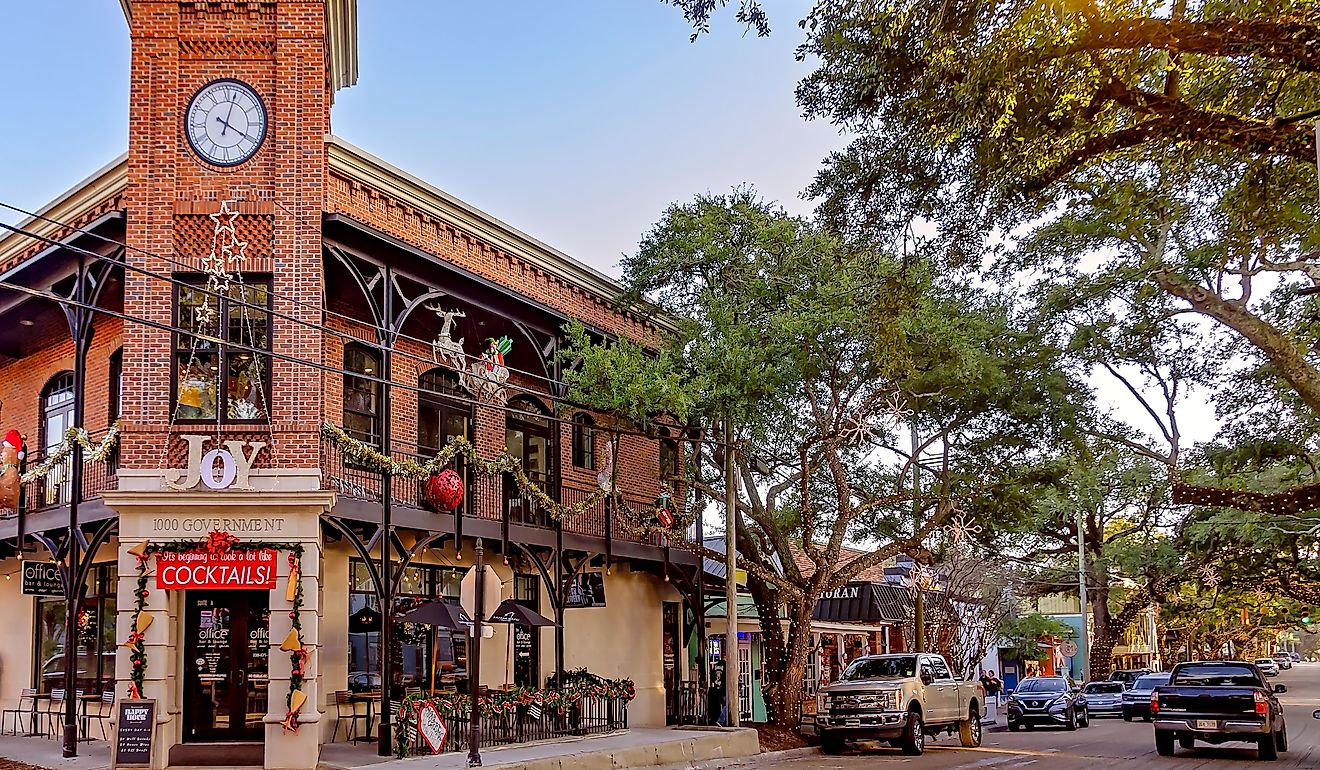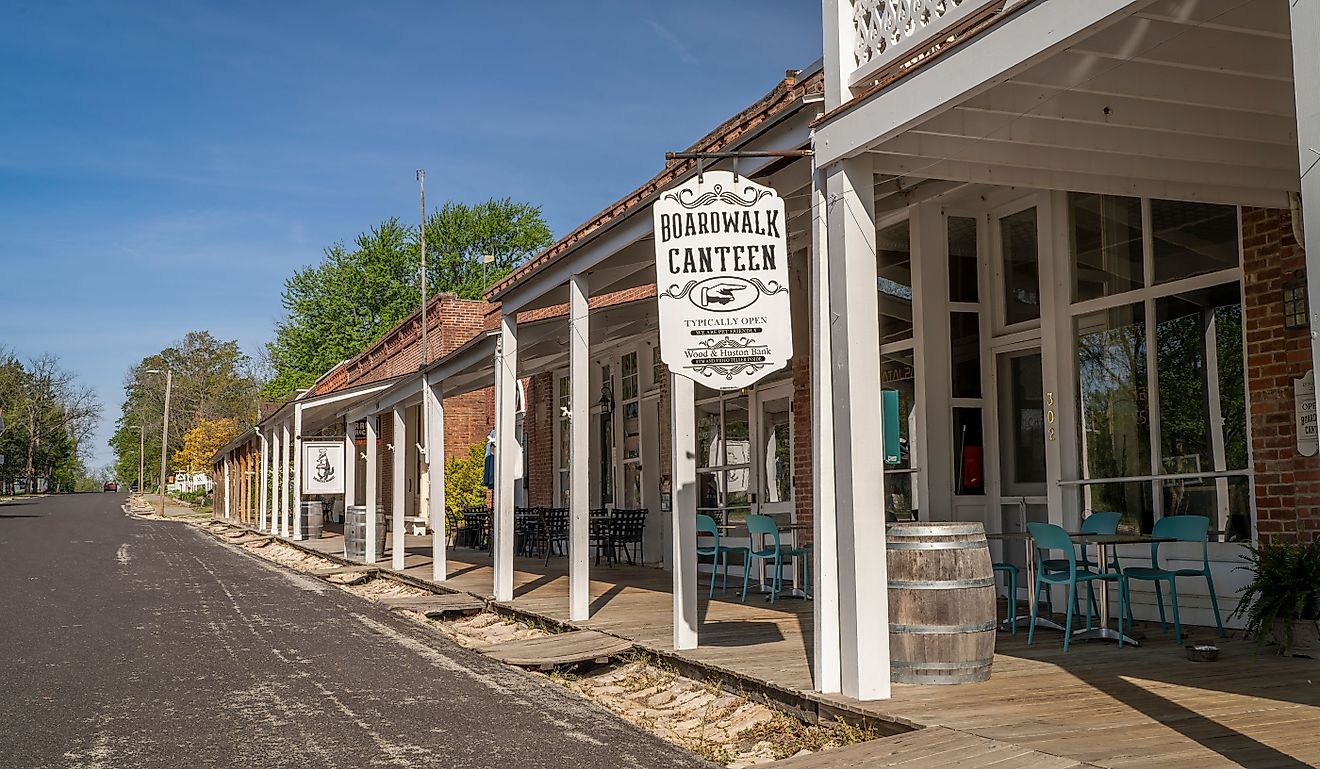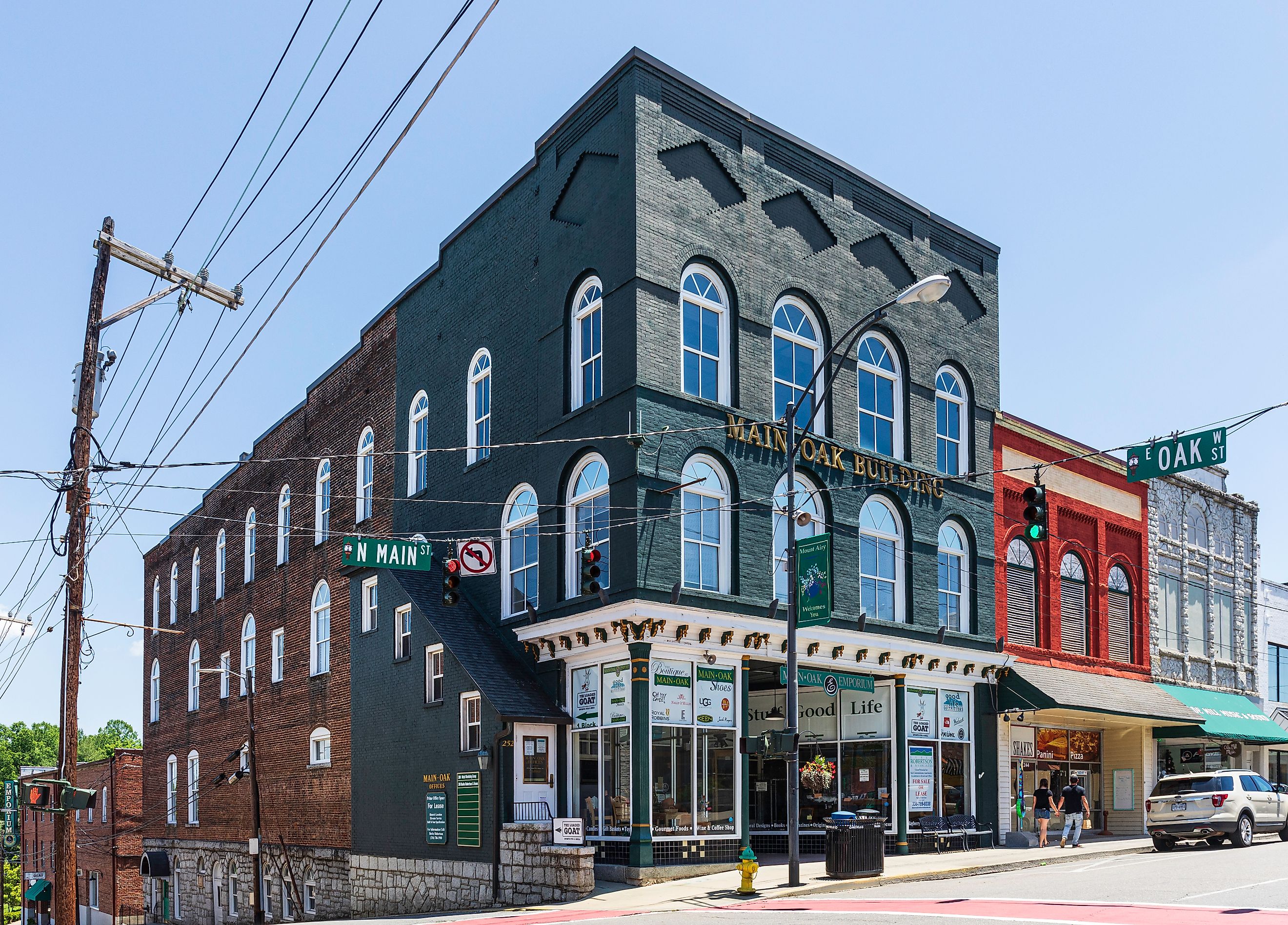
8 Oldest Founded Small Towns in North Carolina to Visit in 2024
North Carolina, a state celebrated in song and spirit, is steeped in history that spans from the revolutionary era to pioneering aviation achievements at Kitty Hawk. Its contributions to America's heritage are immense, and its small towns encapsulate this rich past. Early English settlements on coastal islands and historic Civil War battlegrounds give each town a unique perspective on the state's crucial roles, showcased through well-preserved sites and captivating local lore.
While cities like Charlotte and Raleigh capture much attention, North Carolina's smaller communities are home to equally fascinating histories. These towns are not only vital to understanding the broader historical landscape of the "Tar Heel" state but also provide serene settings and beautiful architecture. Below are 8 of the oldest founded towns in North Carolina not to be missed.
Mount Airy

Mount Airy, incorporated in 1885, is often dubbed "Mayberry" by locals and visitors alike and stands as a testament to classic American charm and cultural heritage. Imbued in the legacy of The Andy Griffith Show, this quaint town offers more than just a trip down memory lane; it provides a deep dive into the life and times of Andy Griffith, its most celebrated son. Visitors can explore the Andy Griffith Museum, the largest collection dedicated to Griffith, featuring personal items, memorabilia, and insights into the show that mirrored his own upbringing. Adding to the allure are the meticulously preserved architectural gems from the early 20th century and the granite sidewalks that nod to the town’s status as the "Granite Capital of the World." These historical features enhance Mount Airy’s old-town vibe, making every stroll through its streets a picturesque experience.

Situated at the base of the Blue Ridge Mountains, Mount Airy offers numerous outdoor activities, from exploring the largest open-face granite quarry in the world at Flat Rock to hiking the trails of Westwood Park. The town's vibrant community spirit is showcased in its annual events such as Mayberry Days and the Autumn Leaves Festival, which draw thousands of visitors each year. These festivals, along with local landmarks like Floyd's City Barber Shop and the Old Mayberry Courthouse, offer a unique blend of cultural and recreational activities that ensure Mount Airy is not just a place to visit, but a place to experience and remember.
Bath

New Bern

New Bern, established in 1710 where the Trent and Neuse Rivers meet, offers a captivating mix of historical depth and scenic waterfront charm that makes it one of North Carolina's must-visit small towns. As the state's second-oldest town, New Bern is steeped in rich history, evident in landmarks like the Tryon Palace. Built in the 1770s, this Georgian-style mansion was originally the residence of Royal Governor William Tryon and now houses extensive historic gardens and the North Carolina History Center, offering insights into the area's past. Visitors can also explore the birthplace of Pepsi-Cola, where pharmacist Caleb Bradham concocted the famous soft drink in 1898, adding a unique slice of American cultural history to the town’s attractions.
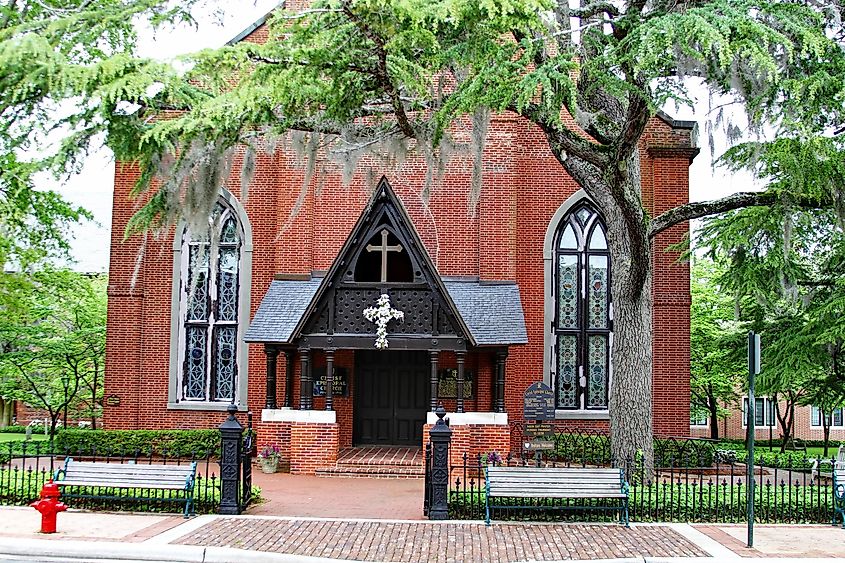
The historical narrative continues as you wander through downtown New Bern, which showcases a harmonious mix of period architecture and modern amenities. The area is dotted with significant buildings like Christ Church and the Masonic Temple, providing not only picturesque views but also a glimpse into the town’s architectural evolution. Alongside historical exploration, New Bern’s setting at the confluence of two rivers enhances its appeal with beautiful waterfront vistas that invite leisurely strolls and outdoor activities.
Salisbury
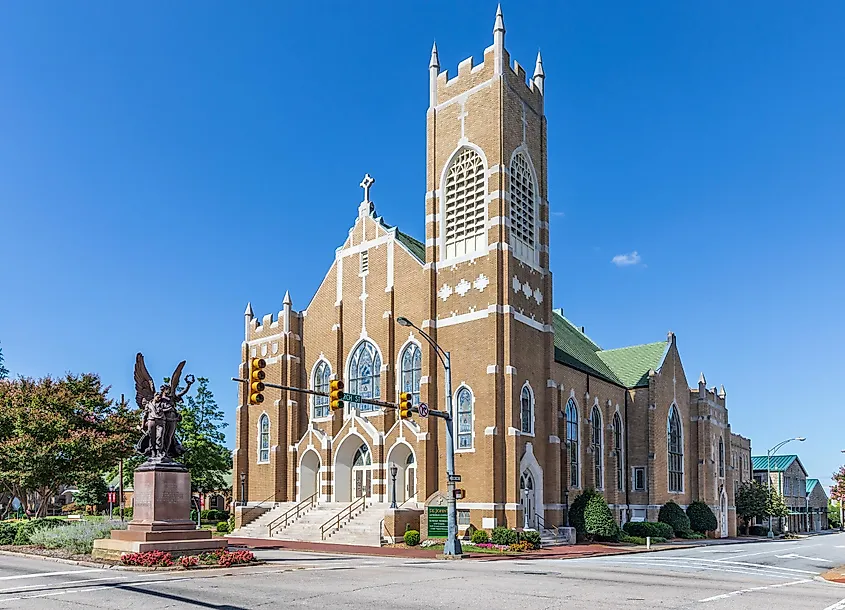
Salisbury, established in 1753, is a historical gem located in the Piedmont region that offers visitors a rich tapestry of American history coupled with scenic beauty and cultural offerings. The town serves as a portal to the past, with numerous sites that highlight its significant roles during both the American Revolutionary and Civil Wars. One standout attraction is the Dr. Josephus Hall House, which began as classrooms for the Salisbury Academy before becoming the residence of Dr. Hall, a chief surgeon during the Civil War. Today, this house is meticulously adorned with period furnishings, offering an authentic look at 19th-century life in Salisbury. The town's historical depth is further complemented by the Salisbury National Cemetery and the venerable Old Stone House, providing a full spectrum of educational and visual experiences for history buffs.

Salisbury is enriched with cultural vitality, visible in its vibrant downtown area which boasts preserved 19th-century architecture and a thriving arts scene. The North Carolina Transportation Museum, located nearby, extends the historical journey, showcasing the evolution of transport in the region. For those who enjoy the outdoors, the proximity to the Yadkin River and areas like the Lake Corriher Wilderness Area offers ample opportunities for hiking, fishing, and appreciating nature.
Beaufort

Beaufort, North Carolina, established in 1709, is the third oldest town in the state and a treasure trove of maritime history and preserved historical architecture, making it a prime destination for those seeking to immerse themselves in authentic coastal heritage. The Beaufort Historic Site, located in the heart of the town, offers a vivid look into the past with its meticulously restored buildings such as the 1778 Cushing House and the 1829 Old Jail. Further enhancing its historical allure, the Old Burying Ground provides a poignant connection to the town’s colonial era, housing graves of early settlers, sailors, and soldiers. This rich historical canvas is complemented by tales of the notorious pirate Blackbeard and the remnants of his ship, the Queen Anne's Revenge, which contribute to Beaufort's unique narrative.
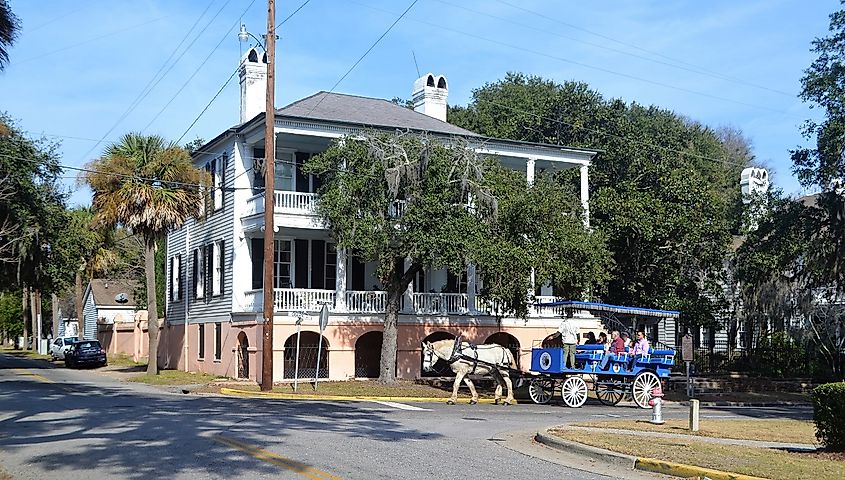
The North Carolina Maritime Museum is a focal point for maritime enthusiasts, showcasing artifacts from shipwrecks and detailing the area's boat-building traditions. The town’s boardwalk offers scenic views of the Beaufort Inlet and Carrot Island, ideal for leisurely strolls or enjoying fresh local seafood. For those seeking a blend of adventure and relaxation, Beaufort provides ample opportunities, from kayaking through salt marshes to observing wild horses at the nearby Rachel Carson Reserve.
Hillsborough
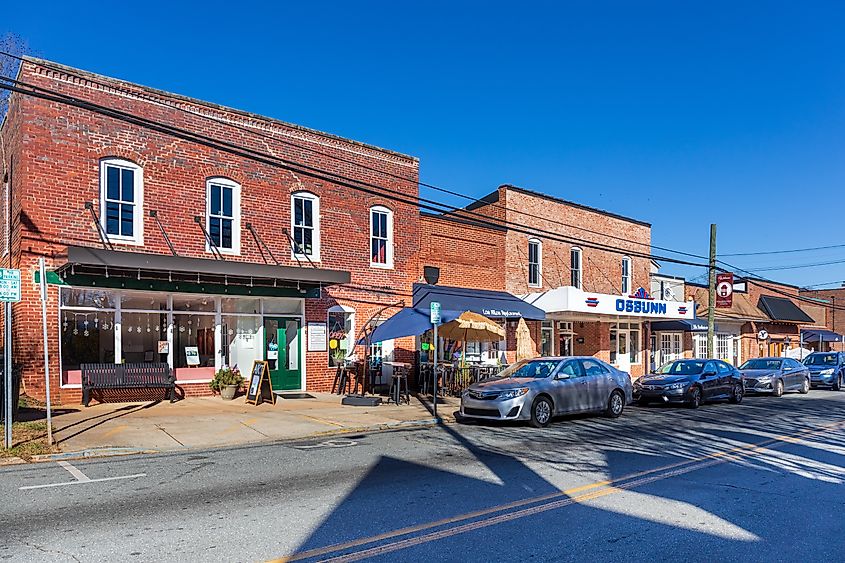
Hillsborough, serves as a captivating snapshot of America’s historical narrative, melded with the tranquility of natural landscapes. As a once bustling hub of political and cultural significance, the town retains its historical grandeur through meticulously preserved structures and sites. Visitors are drawn to landmarks such as the Orange County Courthouse, built in 1845, which still functions as a center for community and government activities. History enthusiasts will find the Historic Occoneechee Speedway Trail especially compelling; originally one of the first NASCAR tracks, it has been transformed into a scenic walking trail, linking modern recreational pursuits with historical intrigue. Further exploration into Hillsborough’s past can be undertaken at the Burwell School Historic Site, a 19th-century girls' academy, and through various sites significant to both the Revolutionary and Civil Wars, offering a deep dive into the town’s rich heritage.

The town’s proximity to Eno River State Park and Occoneechee Mountain State Natural Area provides ample opportunities for hiking and enjoying the serene riverwalks. The downtown area, characterized by Federal and Colonial-style homes and brick sidewalks, creates a picturesque setting that complements the town’s vibrant artistic community. Notable historical figures such as William Hooper, a signer of the Declaration of Independence, and jazz composer Billy Strayhorn have called Hillsborough home, adding layers of historical depth and cultural significance.
Edenton
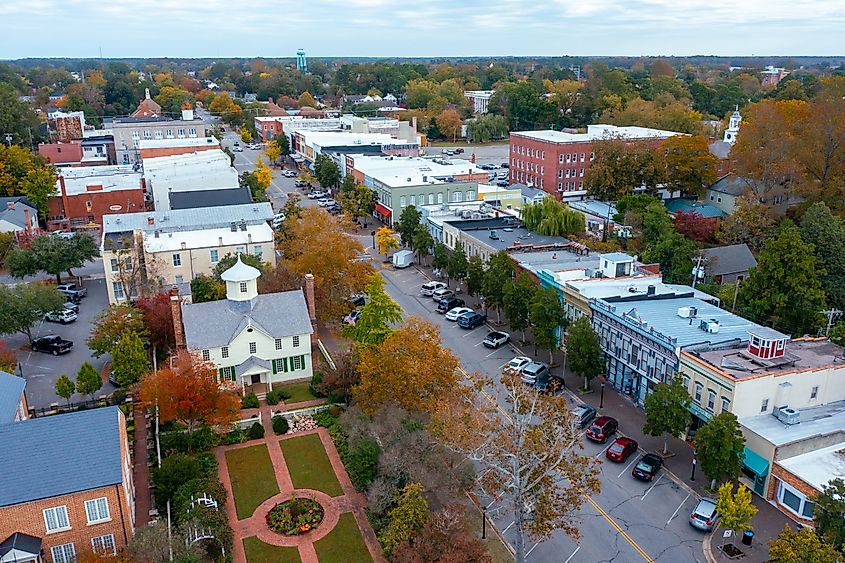
Edenton was founded in the early 1700s and served as the first colonial capital of the state; Edenton's heritage is vividly preserved in its architecture and public spaces. The town's historic significance is highlighted by events such as the Edenton Tea Party, an early political protest by women, and the presence of notable figures like Joseph Hewes, a signer of the Declaration of Independence. Key historical landmarks such as the Cupola House and St. Paul’s Episcopal Church offer visitors a glimpse into the town’s storied past, while the downtown area, with its brick sidewalks and period buildings, provides a charming backdrop for leisurely exploration and local dining at places like The Table at Inner Banks.
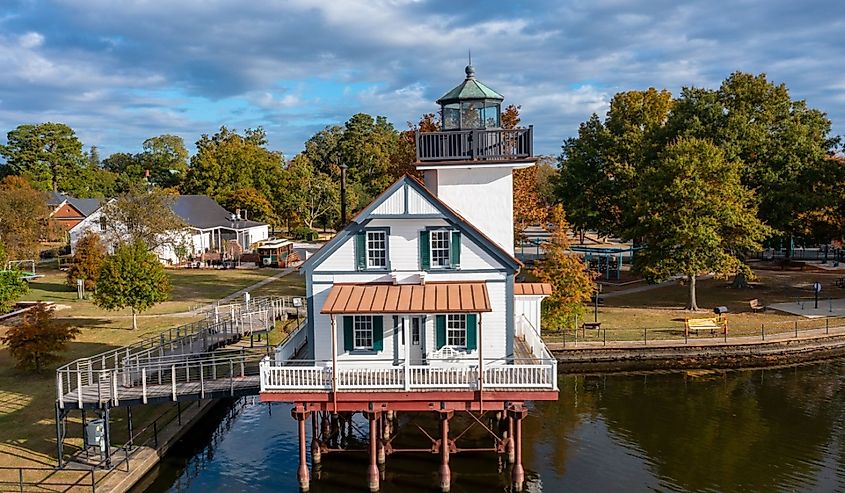
Further enhancing Edenton’s appeal is its role during the Civil War as a vital part of the Underground Railroad, aiding African Americans in their quest for freedom. This narrative is complemented by the Harriet Jacobs Trail, which celebrates the life of the African American writer and abolitionist. The town also boasts the Roanoke River Lighthouse, which stands as a beacon of maritime history, guiding ships through Albemarle Sound. Visitors can engage with the town's history more interactively through the vintage trolley tours, which traverse 300 years of Edenton's history, offering insights from its days as the colonial capital to its involvement in pivotal movements for freedom and rights in America.
Manteo

Manteo, located on Roanoke Island in the scenic Outer Banks of North Carolina, offers a unique blend of historical intrigue and coastal charm, making it a standout destination among the oldest-founded towns in the state. This town, dating back to one of the first English settlements in America in 1584, is steeped in the mystery of the "Lost Colony," where early settlers disappeared without a trace. Today, Manteo preserves this rich history through attractions like the Roanoke Island Festival Park, a recreation of the original English colony, and the Fort Raleigh National Historic Site. These sites, coupled with the Elizabethan Gardens, not only offer a deep dive into the area's past but also beautiful settings for visitors to explore. Additionally, the town’s waterfront provides a picturesque setting for strolling and enjoying local cuisine, particularly at O’Neal’s Sea Harvest, known for its fresh seafood.
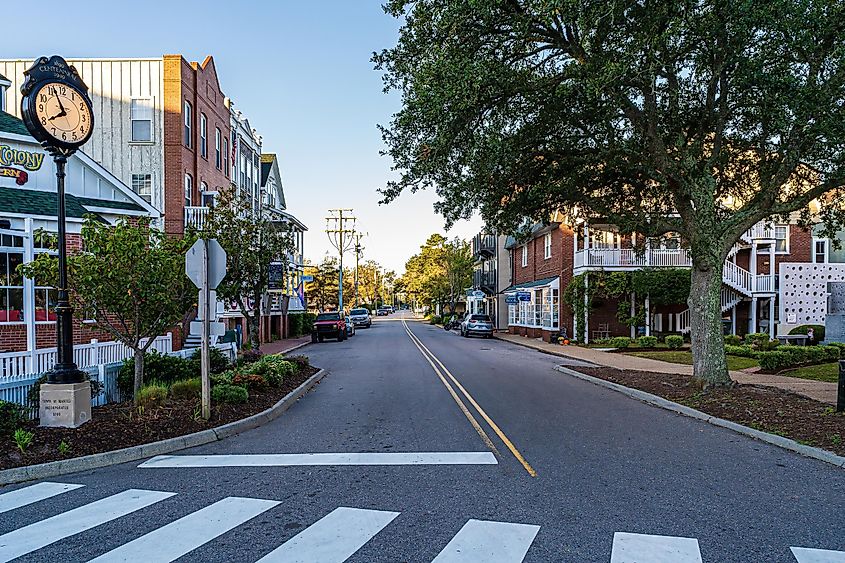
Further enriching the experience, Manteo serves as a cultural hub in the Outer Banks, with a balanced mix of historic preservation and modern leisure activities. The downtown area is home to unique shops like The Christmas Shop and a vibrant Farmers Market, providing visitors with a taste of local life and crafts. The town's geographical position, sheltered by Roanoke Sound and Croatan Sound, allows for calm waters and pleasant weather, enhancing outdoor activities and events. For those interested in maritime history, the Roanoke Marshes Lighthouse and the Roanoke Island Maritime Museum offer insights into the region's nautical heritage.
From the early mysteries of Roanoke Island to the Civil War battlegrounds and beyond, North Carolina’s small towns embody a rich tapestry of American history. Each town, with its unique narrative and preserved landmarks, invites visitors to step back in time and explore the profound impacts these places have had on both state and national history.
Whether you're tracing the steps of the first English settlers, experiencing the revolutionary spirit, or enjoying the serene landscapes and architectural beauty, these towns offer a compelling journey through the past. Visiting these destinations provides more than just historical insight; it offers an opportunity to connect with the enduring spirit and diverse heritage that shape North Carolina today.
